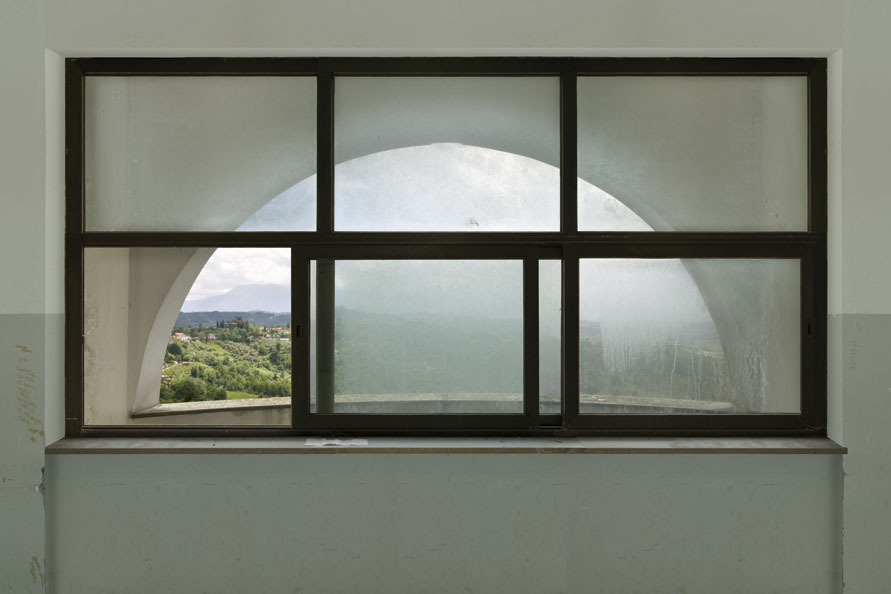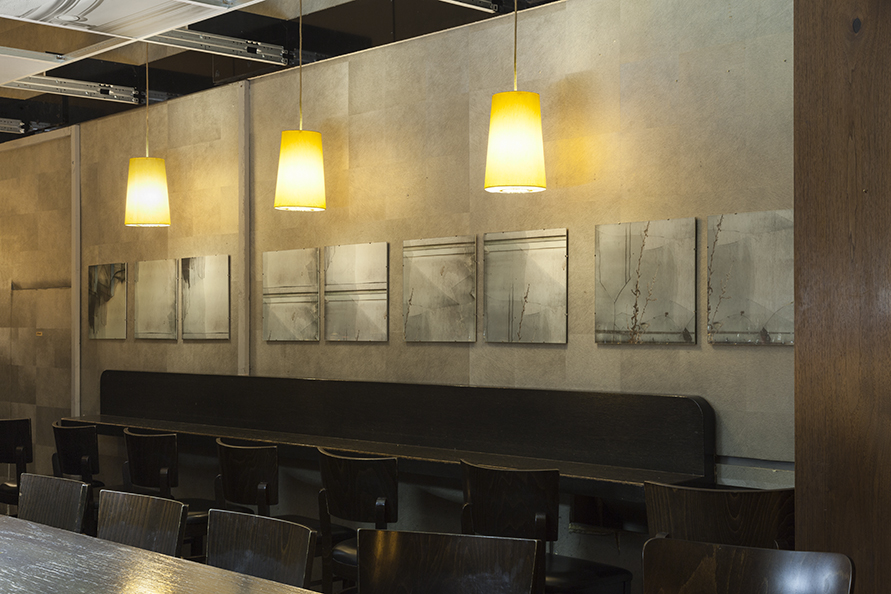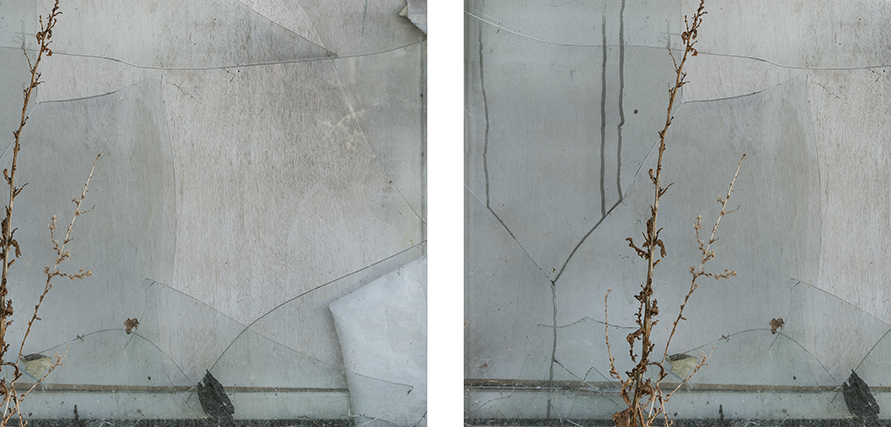
The camera focuses from an interior space towards the broad windows of an abandoned, run-down schoolhouse in Olevano Romano, whereby the mountain range of the Italian landscape is only vaguely visible through the fogged up and stained glass panes. Just with the changing light their silhouette is gradually more highlighted. (Yet, through the opened sliding window, the landscape appears sharply contoured.) In front of the house there is a shade-producing concrete wall, which has arched recesses cut out in front of every window. Thus, the sash bars form a raster, which is sliced through by a wide semicircle. In front of the windows there are remnants of blinds dangling.
At first, the works are montages of photographs in sequences in multiple exposures. Thus, interior and exterior space become equally visible.
The photo series of one window show different situations.
Some videos result from the montage of sequences with minimal movements into the photomasks. The barely noticeable movements of the blinds’ pull cord and the gradually highlighted landscape are the only clues proving that these are not photos but videos. Other videos are created by cross-fading interval shootings. Fixed situations start to dissolve.
The series address the relation between the photo’s statics and the video’s movements: the photo bears the potential of movement in itself. In the video, the movement is reduced to the degree that a standstill is getting palpable. The photo tends towards the video, the video towards the photo.

